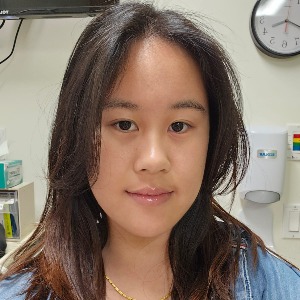Title : Hyperuricemia-induced proinflammatory and immunosuppressive dysregulation in circulating immune cells
Abstract:
Background: Hyperuricemia, characterized by elevated serum uric acid levels, is often asymptomatic but has been associated with gout, kidney diseases, autoimmune disorders, cancer, and metabolic syndrome. The clinical management of asymptomatic hyperuricemia remains controversial due to unclear pathogenic effects on individuals. This study aimed to investigate the impact of soluble monosodium urate (MSU) stimulation on circulating immune cells to understand the potential immunological consequences of elevated uric acid levels.
Methods: Leukocyte Reduction System (LRS) cells were cultured with or without soluble MSU at 100 μg/mL for 24 hours. Total RNA was extracted for RNA-seq analysis, and cell culture supernatants were collected for enzyme-linked immunosorbent assay (ELISA) analyses. Differential gene expression analysis as well as gene ontology and pathway enrichment analyses were conducted.
Results: MSU stimulation resulted in significant alterations in gene expression, with 2,228 genes upregulated and 1,636 genes downregulated (log2 fold change > 0.5, false discovery rate < 0.05). There was a notable shift in immune cell proportions, including decreased percentages of B cells, plasma cells, T cells, and monocytes, and increased percentages of macrophages, natural killer (NK) cells, mast cells, eosinophils, and neutrophils. MSU stimulation significantly elevated the production of Th1 cytokine interferon-gamma (IFNγ) and Th2 cytokine interleukin-13 (IL-13), as well as proinflammatory cytokines tumor necrosis factor-alpha (TNF-α), interleukin-1 beta (IL-1β), and interleukin-6 (IL-6). Elevated levels of myeloid lineage-stimulating cytokines, namely macrophage colony-stimulating factor (M-CSF), granulocyte-macrophage colony-stimulating factor (GM-CSF), and granulocyte colony-stimulating factor (G-CSF), and the chemokine CCL2 were observed, indicating enhanced bone marrow and myeloid cell mobilization. Additionally, there was upregulation of inhibitory immune checkpoint molecules such as programmed cell death protein 1 (PD-1), programmed death-ligand 1 (PD-L1), programmed death-ligand 2 (PD-L2), CD276, lymphocyte-activation gene 3 (LAG3), and V- domain Ig suppressor of T cell activation (VISTA), suggesting a shift toward an
immunosuppressive state.
Conclusions: MSU stimulation induces significant changes in circulating immune cells, promoting proinflammatory responses and altering cell proportions toward inflammatory phenotypes while concurrently upregulating immunosuppressive mechanisms. These findings suggest that asymptomatic hyperuricemia may have pathogenic effects on immune function. Proactive management of elevated uric acid levels could be crucial in mitigating hyperimmune reactions and maintaining immune homeostasis, even in the absence of clinical symptoms. This study also demonstrated that LRS cells are a valuable model for studying immune cell interactions under stressed conditions.




